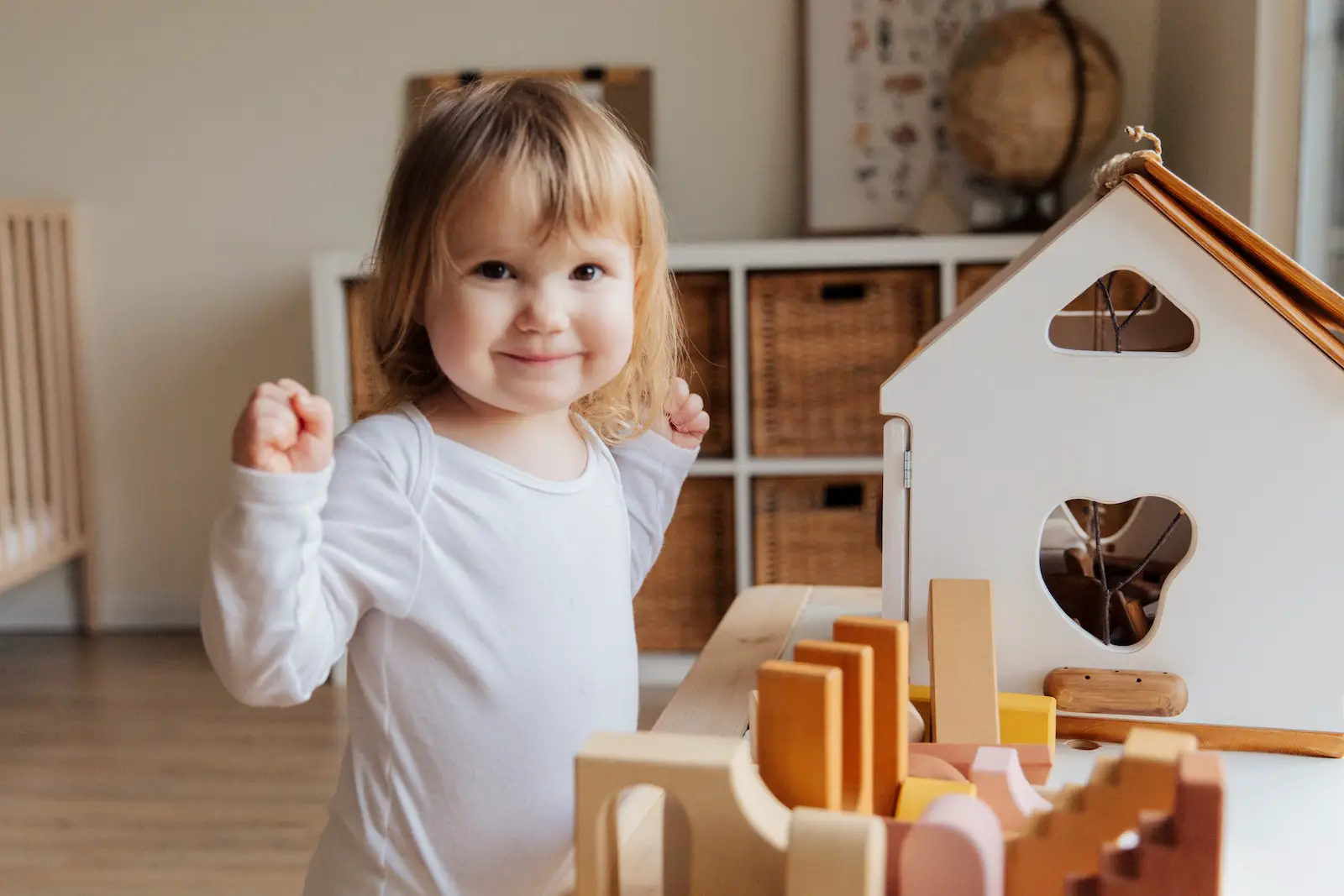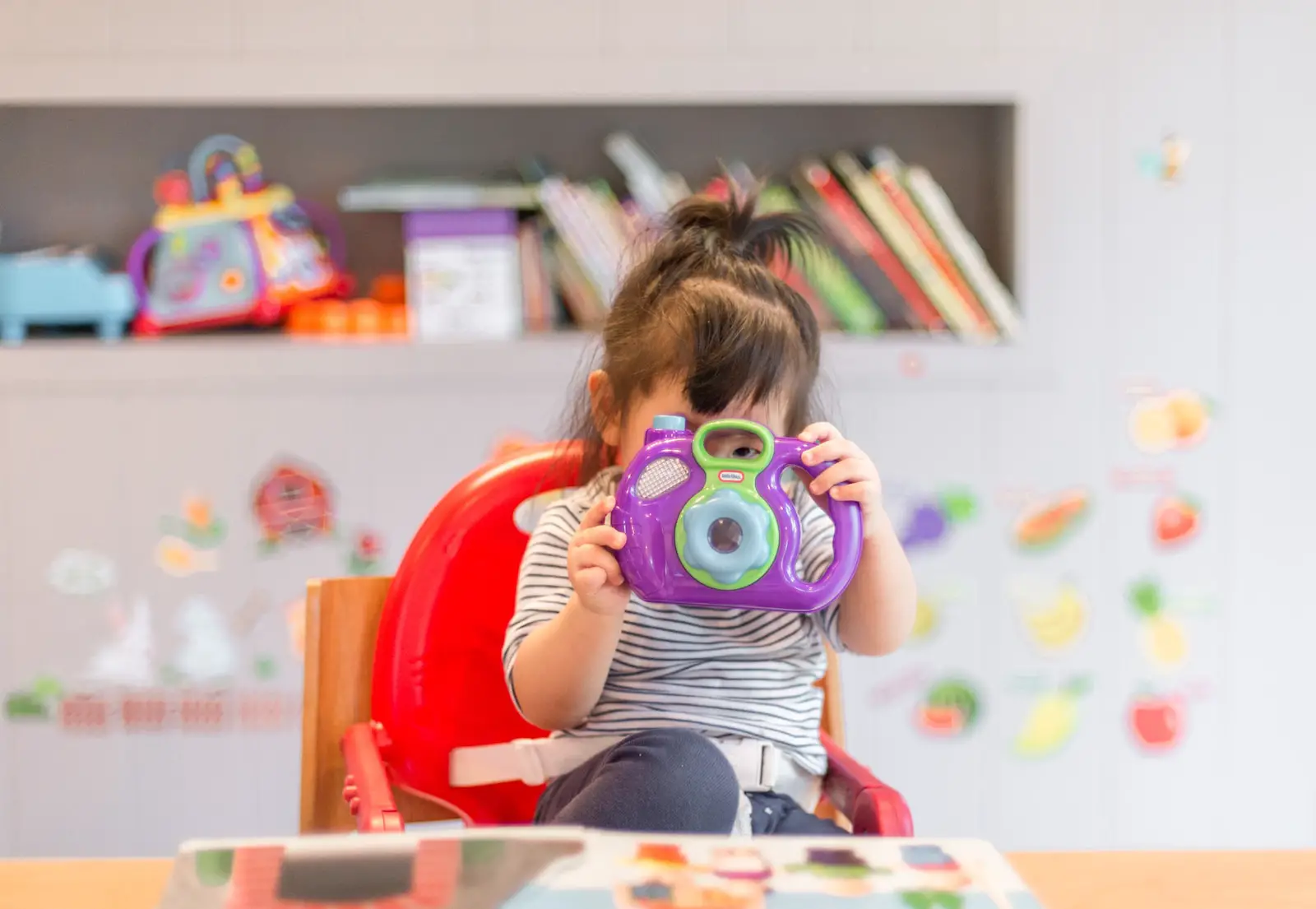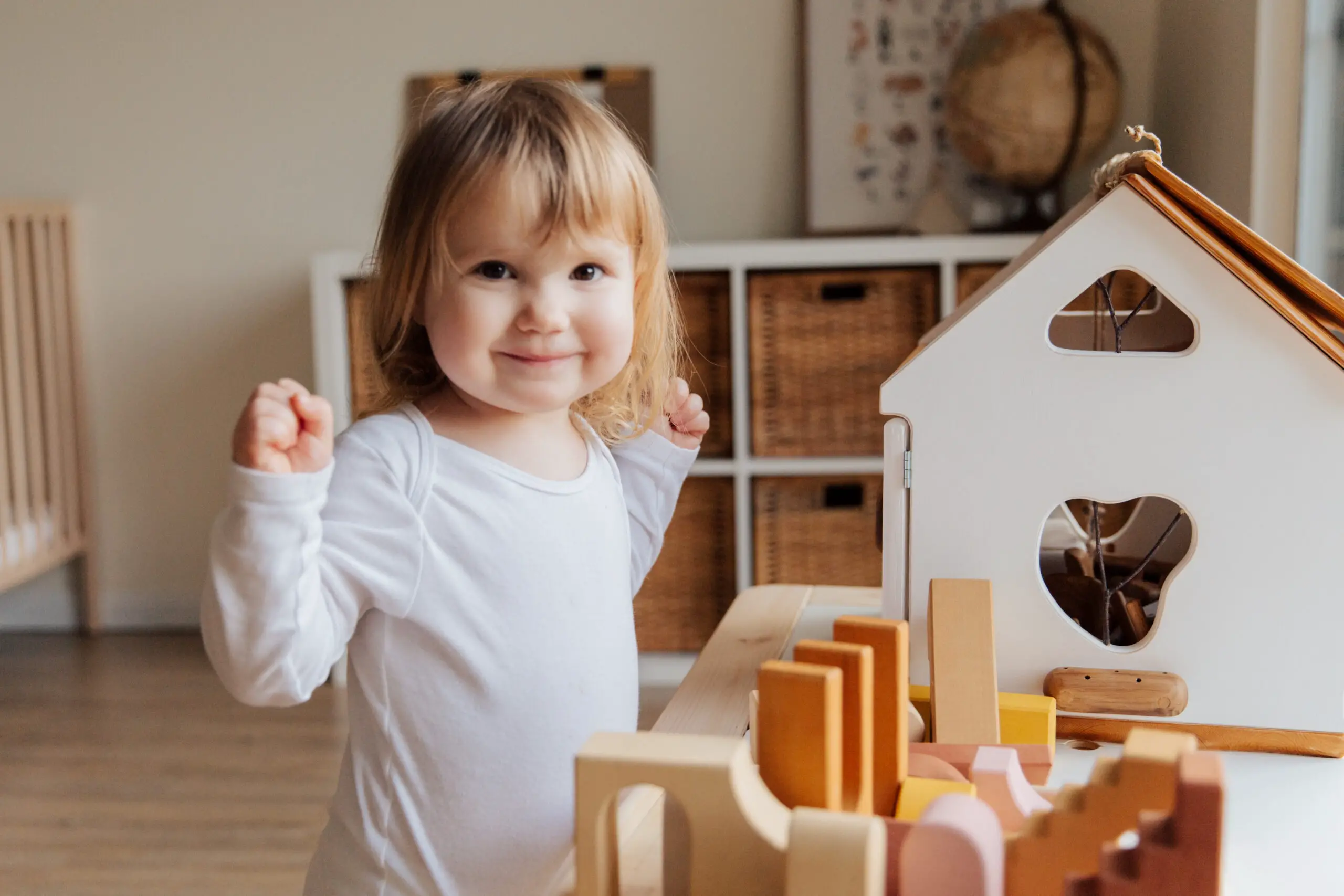As a new parent, one of the most exciting aspects of preparing for your baby’s arrival is creating their nursery. Not only do you want it to be a comfortable and safe space for your little one, but you also want it to look stylish and reflect your own personal taste. However, it can be overwhelming trying to figure out where to start and what elements are important.
The Importance of Creating a Stylish and Practical Baby’s Room
When it comes to designing a baby’s room, there are two main factors that should be considered: style and practicality. A stylish room not only looks aesthetically pleasing, but can also have a positive impact on both the parent and baby’s mood. On the other hand, practicality ensures that the room is functional and meets all of your needs as a caregiver.
It’s important to strike a balance between these two factors since having an overly stylized room may sacrifice functionality, while an overly practical room may lack character. Creating a space that is both stylish and practical will ensure that you’re able to care for your baby easily while enjoying spending time in the room together.
Brief Overview of What the Article Will Cover
This article will cover all aspects of designing a stylish yet practical baby’s room from choosing furniture to selecting color schemes, lighting considerations, organizing essentials as well as adding personal touches. We’ll provide helpful tips on how you can optimize storage space in even the smallest rooms while ensuring safety measures are taken into account.
Additionally, we’ll provide unique ideas on DIY projects that can help make your nursery standout effortlessly while reflecting your personality at every corner. By following these guidelines alongside professional advice from experienced parents & interior designers alike; you’ll be sure to create an amazing nest for both yourself & your little bundle of joy!
Choosing the Right Furniture
What to Look For in a Crib, Dresser, and Changing Table
When it comes to furnishing your baby’s room, safety and functionality are key. When selecting a crib, make sure it meets safety standards and has adjustable mattress heights.
A convertible crib can be a smart investment as it can be converted into a toddler bed as your child grows. A dresser with ample storage space is essential for keeping all of your baby’s clothes organized.
Make sure that the dresser is sturdy with smooth-gliding drawers that won’t slam shut on little fingers. As for the changing table, choose one that has a guardrail around the edges to keep baby safe during diaper changes.
Tips for Maximizing Storage Space in a Small Room
If you’re working with limited space, there are plenty of ways to maximize storage while still maintaining style. Consider investing in furniture pieces that have multiple functions like a changing table with built-in storage shelves or drawers underneath the crib for extra clothing storage.

Use vertical space by installing shelves or hanging organizers on walls to store diapers, wipes, and other essentials. Utilize under-bed storage bins or baskets to keep larger items like blankets or toys out of sight but easily accessible.
Consider investing in furniture pieces that can grow with your child such as bookshelves or toy chests that can be used well beyond infancy. By selecting furniture wisely and utilizing smart storage solutions, you’ll be able to create a stylish and functional nursery even in small spaces!
Decorating with Color and Texture
Choosing a Calming yet Stimulating Color Scheme
Choosing the perfect color scheme for your baby’s room can be a daunting task. You want something that is both soothing and stimulating to their growing minds. A great place to start is with pastel colors, which are calming to the eye and can still add some excitement to the room.
Soft shades of blue, green, or lavender are all great options for baby’s rooms. Another option is to choose a neutral color palette in shades of gray, beige or ivory that will allow you to add colorful accents easily.
When choosing accent colors, consider using brighter shades like yellow or orange in moderation as they can overstimulate babies. Additionally, consider using colors that complement each other well such as blues and greens or pinks and purples.
Adding Texture through Bedding, Rugs, and Curtains
Adding texture to your baby’s room is an excellent way to make it feel warm and cozy while also providing sensory stimulation for your little one. A soft plush rug will provide a comfortable surface for playtime while also adding texture underfoot.
Consider layering rugs in different textures such as wool on top of jute. Window treatments can also add texture while providing practical benefits such as blocking out light during nap time.
Choose curtains made from natural fibers like linen or cotton blends that have a bit of weight so they hang well but stay put when drawn closed. When it comes to bedding, opt for soft fabrics like organic cotton jersey which feels cozy against the skin yet breathable enough so your baby doesn’t overheat at night.
Avoid anything scratchy like synthetic fabrics or wool which can irritate delicate skin. Consider adding fun throw pillows made from different textured fabrics such as faux fur or crochet cotton that will provide much-needed comfort when snuggling with your baby.
The Importance of Proper Lighting in a Baby’s Room
Lighting is one of the most important aspects to consider when designing a baby’s room. It plays a crucial role in keeping your baby safe and comfortable while also creating a cozy atmosphere.
Natural light is always preferable, as it provides numerous benefits for both you and your baby. However, if natural light is limited or unavailable, you can easily supplement it with artificial lighting.
When choosing the lighting for your baby’s room, try to find fixtures that provide soft, diffused light. Harsh or bright lights can make it difficult for your baby to fall asleep or stay asleep.

Instead, opt for gentle illumination that will create a peaceful and calming environment. It’s important to have different types of lighting available in the room, including overhead lighting and lamps with dimmer switches so you can adjust the level of brightness based on your baby’s needs.
Creative Ideas for Wall Art, Mobiles, and Other Accessories
One way to add personality and style to your baby’s room is through creative accessories like wall art or mobiles. Wall art is an easy way to decorate large spaces without taking up additional floor space. You can create a gallery wall using framed artwork or prints that match the theme of the room.
Mobiles are another great option since they not only serve as decoration but also provide visual stimulation for your baby. Choose mobiles that feature simple designs with contrasting colors or shapes – these are easiest for babies to focus on and enjoy.
Other accessories like throw pillows or stuffed animals can be used as decorative accents that also serve a practical purpose by providing extra comfort during nap time or playtime. Just make sure any items in the crib are safe for babies – avoid anything with small parts that could be choking hazards.
Lighting and accessories play an important role in creating an inviting and practical space for both you and your baby. With the right lighting and decorative touches, you can create a cozy and comfortable haven that your little one will love spending time in.
Safety Considerations
Creating a baby’s room is not only about picking the right furniture and decorations. It’s also essential to make sure that the room is safe for your baby to sleep, play, and grow in. Here are some tips on how to ensure the safety of your baby in their room.
Tips for ensuring the safety of your baby in their room
Firstly, it’s essential to make sure that all furniture is secure and stable. This includes making sure that dressers and bookshelves are anchored to the wall so they can’t tip over. Also, check that any electrical cords are out of reach or covered with a cord protector.
Additionally, make sure there aren’t any small objects or loose toys that could be swallowed or choked on. Another important aspect of creating a safe space for your baby is ensuring proper ventilation.
Keep the air circulating by using an air purifier or opening windows when possible. Additionally, avoid placing cribs near windows with cords or blinds as they can be pulled down accidentally by curious little hands.
Common hazards to avoid
There are some common hazards you should be aware of when creating a baby’s room. For example, avoid placing hot items such as lamps or humidifiers close to curtains or other flammable materials.
Similarly, don’t use soft bedding such as blankets and pillows until your baby is at least one year old since these items can increase the risk of suffocation. It’s also important to choose paint with low VOC (volatile organic compounds) levels as these can cause health problems such as eye irritation and respiratory issues in both adults and children.
Remember never to leave your baby unattended on changing tables or other elevated surfaces even if only for a short moment since falls from heights can cause serious injuries. By following these tips and being aware of common hazards when creating a safe and stylish baby’s room, you can create a space that is not only beautiful but also secure for your little one.
Organizing Baby’s Essentials
Strategies for Organizing Clothes
One of the biggest challenges for new parents is keeping baby clothes organized. Start by sorting them according to size and season. Keep the current size in a dresser or closet, and store outgrown items in labeled bins.
Use dividers or drawer organizers to separate clothes by type (i.e. onesies, pants, pajamas). This will make it easier to find what you need quickly.
Another great tip is to use hanging organizers on the back of doors or in the closet for additional storage space. These are perfect for storing shoes, hats, and other accessories that tend to clutter up shelves.
Strategies for Organizing Diapers and Toys
When it comes to diapers, having them easily accessible is essential. Consider using a changing table with built-in storage compartments, or a diaper caddy that can be moved from room to room.
Keep wipes and diaper cream within reach as well. Toys can quickly take over a room if not organized properly.
Start by choosing a designated toy area (such as a corner of the room) and keeping toys contained within that space. Invest in storage bins or baskets that can be easily accessed by baby but also put away when not in use.
Creative Storage Solutions
Get creative with your storage solutions! Use under-the-bed storage boxes for extra blankets or clothing items not currently being used. Hang shelves at different heights on the walls to display books and stuffed animals.
You can even repurpose items like hanging shoe organizers as toy storage units. Another fun idea is to use decorative baskets or crates as part of your décor while also being functional storage pieces.
These can be used as catch-alls for small toys or books, while adding some personality to the room’s design. By implementing these strategies and getting creative with storage solutions, organizing your baby’s essentials can be both practical and stylish.
Personal Touches
Ideas for adding personal touches that reflect your style and personality
Adding personal touches to your baby’s room will create a warm and inviting space for both you and your little one. One way to add personality is to use unique, one-of-a-kind items that have sentimental value.
For example, you can frame hand-drawn illustrations or prints made by friends or family members, or display a collection of vintage toys passed down from previous generations. Another idea is to incorporate decor that reflects your hobbies, interests, or cultural heritage.
This could include displaying travel souvenirs, sports memorabilia, or artwork from your favorite artists. Another option is to choose decor elements that reflect a particular theme or color scheme you love.
For example, if you love nature-inspired decor, you could hang botanical prints on the wall and incorporate natural fibers like jute and linen in the bedding and curtains. Or if you’re drawn to bright colors, select bold accent pieces like throw pillows or wall art.
DIY projects to add unique elements to the room
DIY projects are a fun and affordable way to add unique elements to your baby’s room while also showcasing your own creativity. There are countless ideas for DIY projects online that cater specifically to nurseries – everything from handmade mobiles and wall art to repurposing old furniture into new pieces. One cute idea is creating a set of customized wooden blocks with letters spelling out your baby’s name or phrases like “sweet dreams” or “playtime”.
You can also make personalized picture frames with colorful buttons glued on them – this would be perfect for displaying photos of family members in the room. Another idea is sewing cloth crib bumpers (if safe) using fabric patterns you love.
The possibilities are endless when it comes to DIY nursery decor – don’t be afraid to get creative! Not only will you save some money, but you’ll also have a unique room that truly reflects your personal style.
Conclusion
Creating a stylish and practical baby’s room is not as daunting as it may seem. By following some basic guidelines, you can make sure that your little one’s nursery looks great while also being functional and safe. First and foremost, choosing the right furniture is key to creating a space that works for you and your baby.
Look for pieces that are both stylish and practical, with plenty of storage space to keep all those baby essentials organized. When it comes to decorating with color and texture, don’t be afraid to get creative – a mix of soft pastels and bold accents can create a balanced yet stimulating environment for your little one.
Proper lighting is also crucial in any baby’s room, so make sure to include both natural light sources as well as gentle nightlights for those middle-of-the-night feedings. And when it comes to adding personal touches, think outside the box!
DIY projects like homemade artwork or customized shelves can add unique elements that reflect your personal style while keeping the space functional. At the end of the day, remember that creating a stylish yet practical baby’s room is all about making it work for you and your family.
With a little creativity and planning, you can create a space that is both beautiful and useful – ensuring that your little one has everything they need to thrive in their first years of life. So go ahead – let your imagination run wild!
